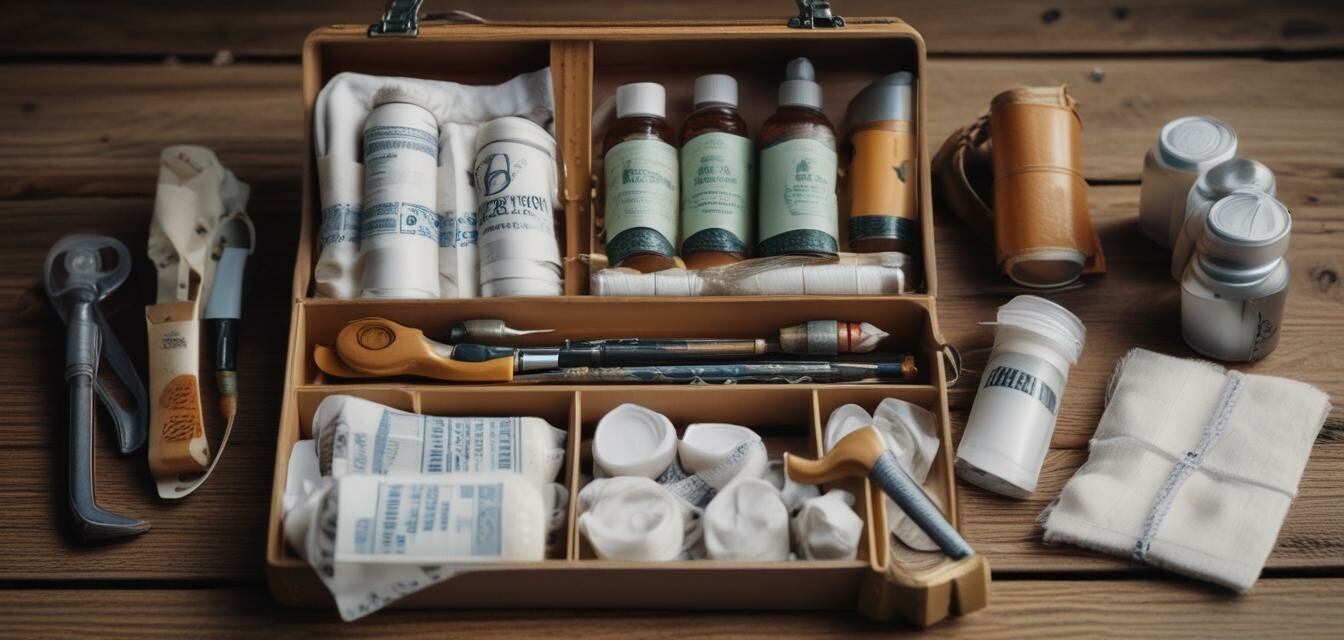
Choosing the Right Horse First Aid Kit
Key Takeaways
- A horse first aid kit is essential for every horse owner.
- Include basic supplies like bandages, antiseptics, and thermometers.
- Customize your kit based on your horse's specific needs.
- Regularly check and restock your first aid supplies.
- Be familiar with the emergency procedures for your horse.
As a horse owner, preparing for emergencies is crucial. Having the right horse first aid kit can make a significant difference in critical situations. This guide will help you understand what to include in your horse first aid kit and how to use these essential supplies effectively. From basic bandages to specialized tools, we've got you covered!
What to Include in Your Horse First Aid Kit
Your horse first aid kit should contain a variety of items that can address different emergency situations. Here’s a comprehensive list of essential items:
| Item | Description |
|---|---|
| Adhesive Bandages | For covering wounds to prevent dirt and bacteria from entering. |
| Gauze Pads | To absorb any bleeding and provide cushioning. |
| Antiseptic Solution | To clean and disinfect wounds. |
| Thermometer | For monitoring your horse's temperature in case of illness. |
| Scissors | To cut bandages or clothing away from a wound. |
| Dressing Tape | For securing gauze pads and bandages in place. |
| Trauma Kit | For major injuries that may require immediate attention. |
| Vet Wrap | A flexible bandage to apply pressure and support injured areas. |
| Cold Pack | To reduce swelling and soothe injuries. |
| Hoof Pick | To clean hooves and prevent stone bruises. |
Customizing Your First Aid Kit
Every horse is unique, and their first aid kit should reflect their specific needs. Consider factors such as:
- Your horse's medical history.
- Common injuries in your riding discipline.
- Any specific medications recommended by your vet.
Customizing your kit can help ensure you are prepared for any situation that arises.
Regular Maintenance of Your Kit
It’s not just about assembling the kit; you must also maintain it regularly. Here are some tips:
- Check expiration dates on supplies.
- Replenish items after use.
- Keep the kit in a dry, accessible place.
- Educate yourself and your family on how to use the items in the kit.
When to Use Your Horse First Aid Kit
Be prepared to use your first aid kit in various situations, including:
- Minor cuts and scrapes.
- Sprains or strains.
- Infections or skin irritations.
- Checking vitals in case of distress.
Knowing when and how to use your first aid kit can save valuable time in emergencies.
Knowing Emergency Procedures
Besides having the right supplies, understanding emergency procedures is vital. Always consult your veterinarian for specific instructions related to your horse's care. It might also be helpful to take emergency care courses.
Tips for Beginners
- Start with the basic supplies outlined above and gradually add more items.
- Understand the common injuries specific to your horse’s breed or activity.
- Practice administering first aid on your horse (with help, if necessary).
- Always have your vet's contact information accessible.
Conclusion
Your horse's first aid kit is an essential part of responsible horse ownership. By taking time to assemble, customize, and maintain your kit, you’ll be prepared to handle emergencies effectively. Make sure to always stay informed and be proactive about your horse's health.
Pros
- Preparedness for emergencies.
- Peace of mind knowing you can respond quickly.
- Potential to reduce injury severity with immediate care.
Cons
- Initial cost of assembling a comprehensive kit.
- Time consumed in regular maintenance.
- Need for training in basic first aid procedures.
Useful Links
For more information on horse riding and care, check out our other articles:
- Buying Guides - A collection of helpful articles to guide your purchases.
- Equestrian Gear - Explore essential gear for horse riding.
- Horse Care Products - Find quality products to care for your horse.
- Rider Tips and Advice - Helpful tips for both new and experienced riders.
- Riding Apparel - Shop for quality riding wear.
